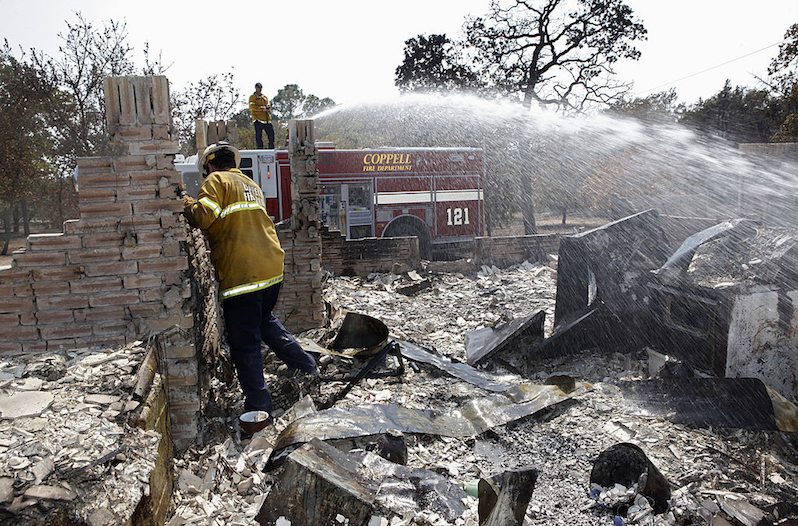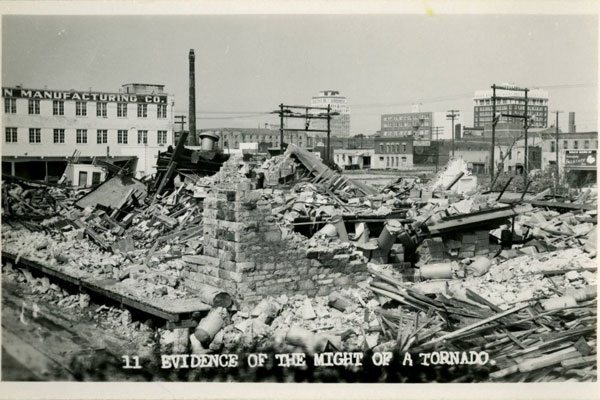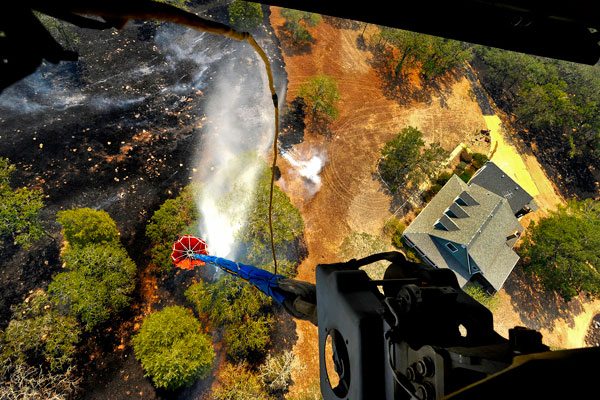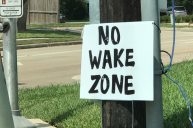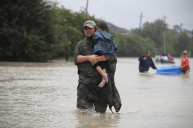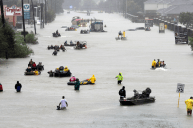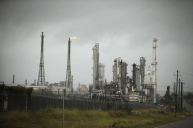Hurricane Harvey will most certainly stand apart as one of the worst natural disasters in the state of Texas. The storm and its winds were only the beginning of Harvey's destruction across the state. For Houstonians, the flooding that followed was far more perilous than the hurricane itself. Even after the rains ceased, thousands of people on the Gulf Coast remained stranded in homes without electricity or clean water, while millions more looked on powerlessly from around the state. The entire scope of the damage won't even be clear until the waters recede.
Videos by Wide Open Country
The Lone Star State is no stranger to the forces of nature. Hurricanes and tornadoes are the most common scourge, but Texas has known floods, wildfires and even earthquakes. Every disaster weathered has left its own mark on the state, just as Harvey will undoubtedly do.
Here's a look back at some of the natural disasters that shaped Texas as we know it today.
The 1900 Galveston Hurricane
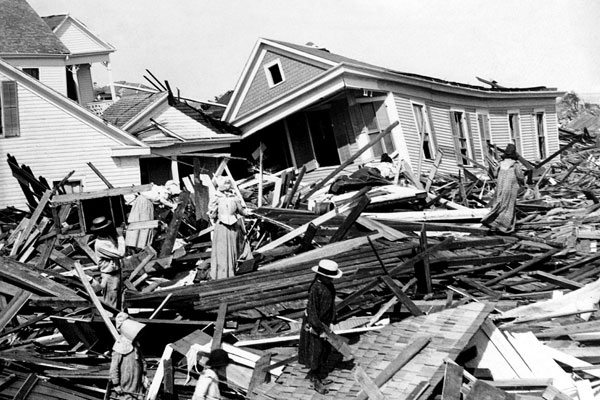
Public Domain
If it weren't for the 1900 Galveston hurricane, Galveston, not Houston, would be Texas's largest city. When the hurricane struck, it killed somewhere in the range of 12,000 people. Even over a hundred years later, it still stands as the worst natural disaster in United States history.
The loss of life and property damage was severe, but the impact on Texas history was even greater. Before the hurricane, Galveston was Texas's largest city, and the main cotton port for the entire country. Commerce doesn't stop for calamity, though. So when the port of Galveston was inaccessible, shipping, and business, diverted to the nearby city of Houston.
1953 Waco Tornado
On Mother's Day, 1953, an F3 tornado tore through downtown Waco, killing 114 people and injuring over 500 others. The destruction of the downtown business district caused citizens to seek out goods and services in the suburbs, which contributed to the decline of Waco's historic downtown. In addition, radar picked up on the tornado's hook echo before it hit. Hence, this tragedy helped scientists develop early tornado warning systems.
Hurricane Carla
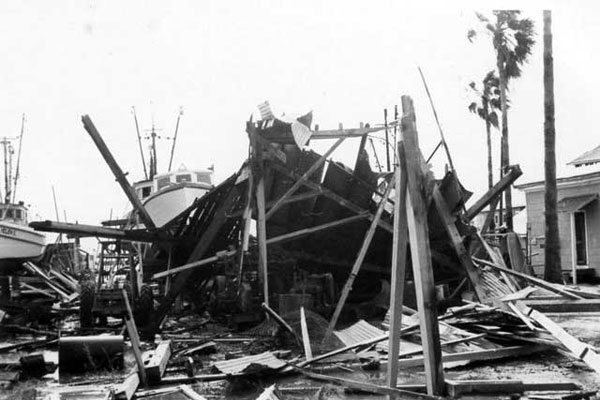
Public Domain
In Sept. 1961, Hurricane Carla pounded the Texas Gulf Coast with 175 mph winds and a storm surge that was 10 feet high. Carla produced over 17 inches of rain, and spawned 26 tornadoes. The storm caused the deaths of 43 people, and prompted native Texan and then Vice President Lyndon B. Johnson to visit the state and promise aid from the federal government. A young correspondent named Dan Rather reported on the storm from the roof of a two story building. Though it may be a familiar scene now, it was an unprecedented move at the time. Journalists would later say that Rather's coverage of Carla changed the way the world sees hurricanes.
Tropical Storm Allison
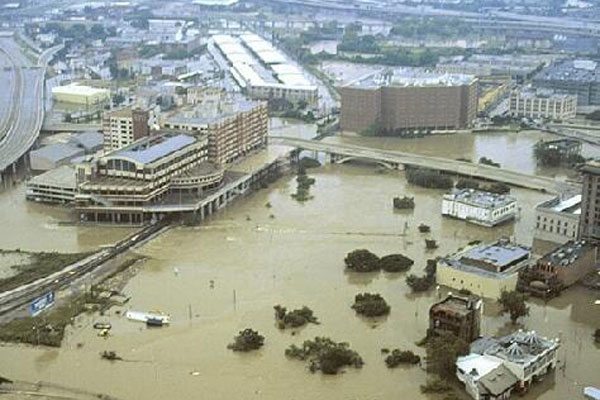
Public Domain
There have been many comparisons made between Hurricane Harvey and Tropical Storm Allison, which hit the Gulf Coast in the summer of 2001. Both were considered "500 year flood" events, but Allison was never determined to be enough of a threat to warrant talk of evacuation from anywhere but the outlying port cities.
Allison sat on top of Houston for five days pouring torrential rains and flooding the freeways completely. Hospitals in the medical center suffered damage and had to evacuate patients. When it was all over, 23 people had perished, and $5 billion worth of damage was done.
Hurricane Rita
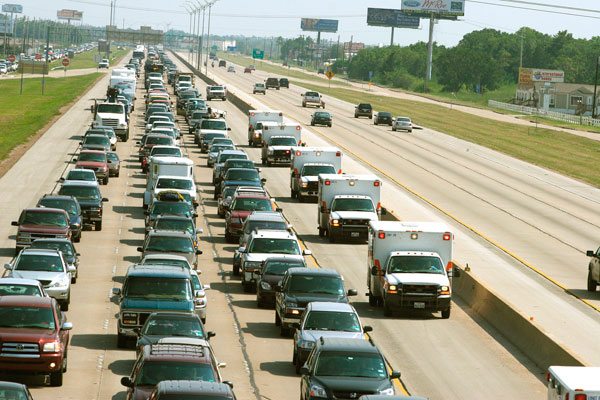
Public Domain
Rita's impact on Texas must be quantified in two separate categories; the damage caused by the storm, and the damage caused by the response to the storm. Rita made landfall in East Texas on the border with Louisiana, causing far less devastation than anticipated.
City officials in Houston, acting on advice from meteorologists, ordered the evacuation of the city. The gridlock that resulted from the 2.5 million people who got on the road caused the deaths of 107 people, including 24 elderly residents of a nursing home whose bus overheated and caught fire.
In the end, Rita turned and just barely grazed Houston, but the impact from the evacuation was so lasting that Houstonians have been reluctant to flee any subsequent hurricanes.
Hurricane Ike
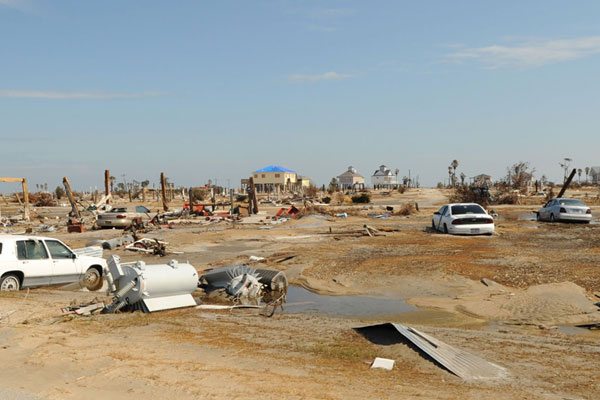
Public Domain
In 2008, the city that had withstood so many catastrophic storms was greatly impacted by the arrival of Hurricane Ike. The flagship hotel was swept away. Dozens of historic oak trees died in the storm surge. The University of Texas Medical Branch hospital also sustained severe damage. In nearby Houston, part of the roof was ripped off of Minute Maid Park. Windows fell out of the J.P. Morgan Chase building downtown. But after Ike, Houston coped, and Galveston was restored better than ever, as is the Texas port city's grand tradition.
2011 Bastrop County Complex Fire
The Bastrop County Complex Fire in 2011 is the worst wild fire in Texas history. The fire started over Labor Day weekend and raged for a week before it was contained enough for residents to start returning to their homes. It was a month total before the fire was completely contained. The fire burned all but 50-100 acres of the over 5,000 acres of Bastrop State Park.
In all, over 34,000 acres of land burned, and two people died. Another casualty of the fire was the Lost Pines, a crop of pre-pleistocene era pine trees The loblolly pines were a defining characteristic of the Highway 71 landscape, and some charred reminders of the fire still remain. The trees are being reforested now and new, soft, light green pines are now cropping up amidst the burned remnants of tree trunks.
2015 Memorial Day Flood
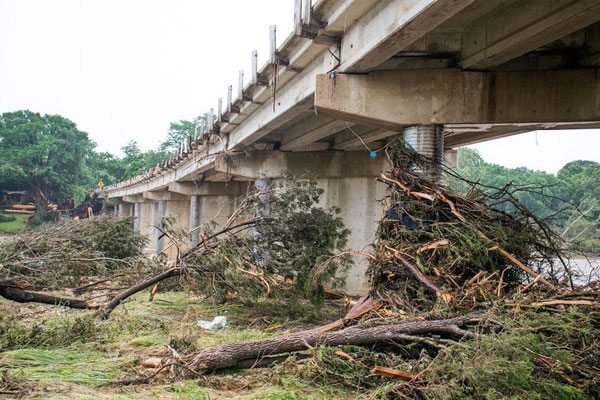
Drew Andrew Smith/Getty Images
Memorial Day weekend 2015 started out like most other Memorial Day weekends in Texas, but by the end, Wimberley and central Texas had been inundated with rains that filled the Blanco River with 36 feet of water within just a few hours. In all, 13 people died in the floods, including three families whose vacation home was lifted off its pilings and floated downstream.
In the aftermath of the disaster, more flood gauges were installed upriver from Wimberley so that the depth of the river in a flood can be measured more accurately much sooner.
Hurricane Harvey
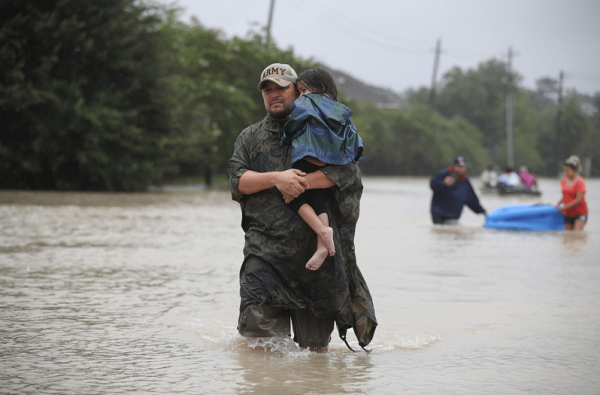
Joe Raedle/Getty Images
Hurricane Harvey descended upon the Texas Gulf Coast on Friday, Aug. 25, leaving a wake of destruction. Corpus Christi, Rockport, and Port Aransas were the hardest hit by the initial storm surge which reached a height of 10 to 12 feet. The wind was intense, with wind speeds clocked up to 170 miles per hour. The storm then moved North along the coast where it hammered Victoria, Texas for over 24 hours before heading up to Houston.
When Harvey reached Houston it slowed to a crawl, moving at a rate of only 2 miles per hour. It was downgraded to a tropical storm, but still caused mass destruction. It dropped more than two feet of water on the streets of Texas's largest city, broke the Columbia Lakes levee, and caused the collapse of a retaining wall along Beltway 8. The unprecedented opening of the Addicks and Barker flood gates eased flooding in some regions, but made the situation along Buffalo Bayou worse.
William Long, the director of FEMA called Harvey "the worst disaster the state has ever seen." After four days over Houston, the storm moved into east Texas near Beaumont and Port Arthur where it caused more devastation. It will likely be remembered as the worst hurricane to hit Texas since Carla. Advanced warning systems and modern meteorology have made it so that we can better weather storms, thereby preventing mass loss of life like in the 1900 Galveston storm.
